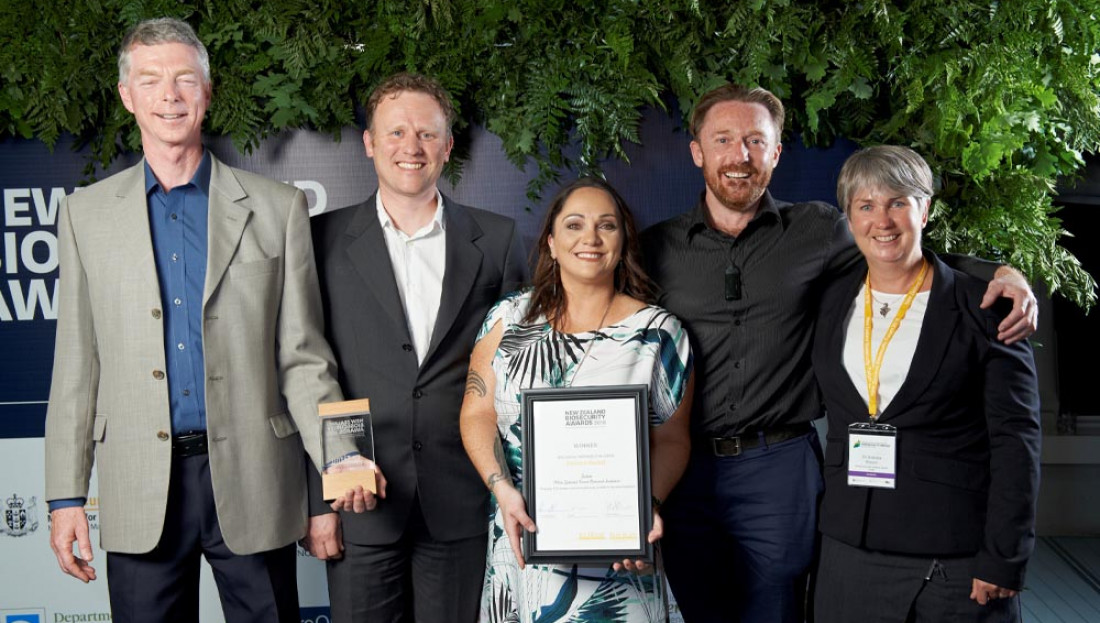New weapons in the battle for urban biosecurity wins national award
Date
13 November 2018
Cyborg unmanned aerial vehicles allowing real-time sensing for insects in difficult environments are part of the urban biosecurity solution that’s earnt Scion a national biosecurity award.
Scion, a Crown Research Institute, took out the 2018 New Zealand Biosecurity Biological Heritage Challenge Science Award for its novel approaches in creating world-leading pest detection and eradication tools. “It’s a thrill to win this award and a real win for all the hardworking scientists and end-users who have been very patient with us,” Dr Richardson, Scion’s Principal Scientist, Forest Science, said.
Scion has created a world first in active surveillance technology for insect pests, through the development of a 'mobile electroantennogram'.
“The device can detect minuscule amounts of insect pheromones (chemicals constantly secreted by insects) – at picogram (one trillionth of a gram) scale at a 30m distance – and thus detect the presence of specific insects. The technology uses electroantennogram science to connect an insect antenna into an electric circuit,” Dr Richardson said.
The next step for the mobile electroantennogram was implementing it on an unmanned aerial vehicle (UAV). The cyborg UAVs allow real-time sensing for insects in difficult environments, for example, tall trees, cliffs, and densely populated areas – like our urban environments.
“Our trials have proven that UAVs wired with a pheromone sensor–antenna can definitely detect specific pheromones from a target insect. We’re working with experts from France to miniaturise the concept and refine it,” Dr Stephen Pawson, a Scion forest entomologist, said.
Understanding a pest’s origin and where it’s spread to can influence the response to a pest, with early detection enabling eradication treatments to prevent further spread.
“Further development of this tool is underway to pinpoint a pest’s location quicker than a human surveillance team, reducing the spread of the organism, minimising the treatment area and resulting in less disturbance to urban residents. It’ll also increase the chance of eradication,” Dr Tara Strand, a Scion Research Leader, said.
Scion has already successfully trialled the mobile electroantennogram and demonstrated that it can detect the pheromone of light brown apple moth, European gypsy moth and greasy cutworm.
The mobile electroantennogram and cyborg UVAs are only part of Scion’s urban toolkit. Strategies are currently being developed for targeted application and more efficient use of pesticides, with a framework for improving community engagement and surveillance.
“It’s not over yet. This programme has allowed us to test concepts and identify areas that we can improve on. We want to hone in on these next with continual development and refinement of our tools,” Dr Richardson said.
